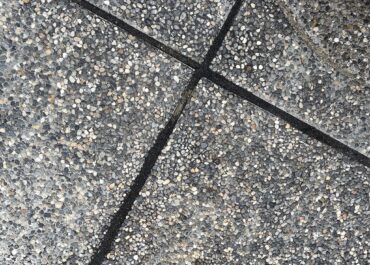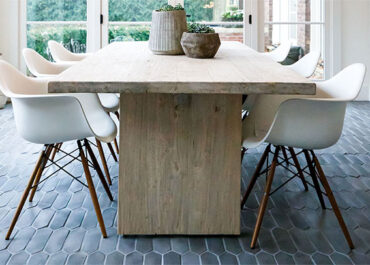
Planning and building a new outdoor project with pavers takes into account some meticulous calculations, budget constraints, and the right choice of materials – all to create a withstanding floor structure over time. In this sense, knowing exactly the tools and resources you are going to need – including what to put between pavers and the amount involved – is pivotal for a professional installation.
In this article, learn what to put between pavers after laying out the groundwork for your project. Is it gravel? Sand? Or polymeric sand, perhaps?
You may also like: Paving prices in 2024 – A hardscape guide
What to put between pavers
The answer is plain and simple, as you can see by the title itself: polymeric sand. It remains the most popular choice for filling the joints between pavers in the U.S., consisting of a blend of fine sand and a polymer additive that, when activated with water, forms a binding agent.
In immediate terms, this binding agent helps to lock the sand particles together – creating a stable joint that resists erosion, weed growth, and insect infestation. Polymeric sand is designed to harden once it’s exposed to moisture, providing a solid, durable surface between the pavers. This means that your paving stones – regardless of the material chosen – won’t move or shift around even under high traffic, people and vehicles included.
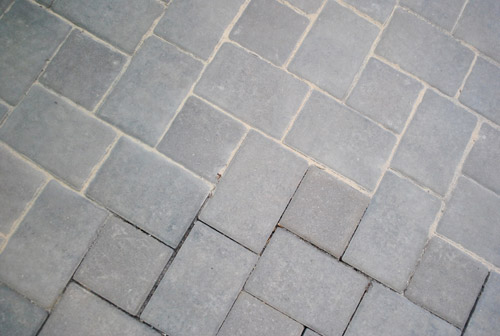
Due to its effectiveness in creating stable, low-maintenance surfaces between pavers, polymeric sand is a popular choice for both residential and commercial paving projects. However, as we are about to see, proper installation by professional hands is crucial to ensure optimal performance, including following manufacturer instructions and taking into account factors like weather conditions during application.
What to put between pavers besides polymeric sand
Despite its market demand, several alternative materials can be used to fill the joints between pavers besides polymeric sand – the choice of jointing material can also depend on factors such as budget, desired aesthetics, project requirements, and personal preference. It’s essential to consider the specific needs of your project (preferably by consulting a hardscape expert) and select the most appropriate option accordingly.
Here are some common options:
Regular sand
Traditional sand is a straightforward and inexpensive option for filling paver joints. While it doesn’t offer the same level of stabilization and weed inhibition as polymeric sand (more on it in a bit), it still provides a basic level of support and drainage.
Crushed stone or gravel
Crushed stone or gravel can be used to fill the joints between larger pavers or natural stone slabs. This material allows for good drainage and can create a more rustic or natural look – however, it may not provide as tight of a joint as sand or polymeric sand.
Pea gravel
Pea gravel is another alternative for filling paver joints, particularly in areas where a more decorative look is desired. Like crushed stone or gravel, pea gravel allows for drainage but may not provide as stable of a surface as sand or polymeric sand.
Polymeric stone dust
Similar to polymeric sand, polymeric stone dust is a blend of fine sand and polymer additives that’s designed to harden when wet, thus creating a solid joint between pavers. However, polymeric stone dust typically has a finer texture than polymeric sand, making it suitable for filling smaller joints.
Mortar
Mortar can be used to fill the joints between pavers, particularly for projects where a solid surface is desired, such as for a patio or walkway. Mortar provides excellent stability and prevents weed growth between the pavers. However, it’s more labor-intensive to install than other options and may require periodic maintenance to repair cracks or gaps.
Benefits of polymeric sand

At the end of the day, using polymeric sand offers several advantages over traditional sand or the aforementioned jointing materials. Those include:
- Stability: Polymeric sand creates a firm bond between the pavers, preventing them from shifting or becoming uneven over time.
- Weed inhibition: The hardened polymeric sand helps to inhibit weed growth between the pavers, reducing maintenance requirements.
- Insect resistance: The solidified joints discourage insects from nesting or burrowing between the pavers.
- Improved aesthetics: Polymeric sand typically comes in different colors to match or complement the pavers, enhancing the overall appearance of the paved area.
- Durability: Once set, polymeric sand forms a strong, long-lasting bond that can withstand foot traffic, weathering, and other environmental factors.
Read as well: How to lay pavers for a walkway
Why not use ordinary sand?
This is a recurring doubt that many homeowners share when planning the whole ordeal. You see, although regular sand and polymeric sand serve similar functions in filling the joints between pavers, they differ in their composition and performance characteristics.
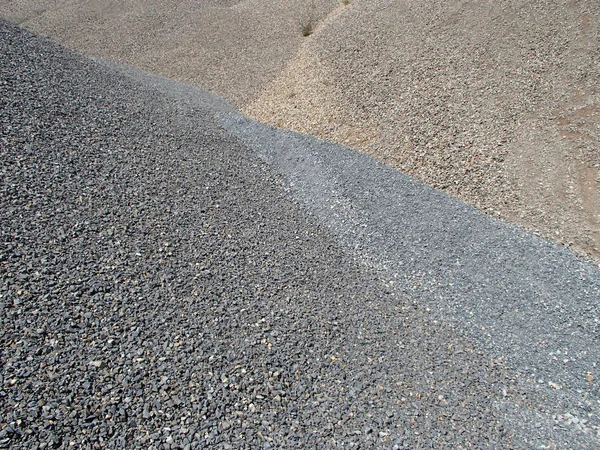
Overall, polymeric sand is more efficient than regular sand for filling the joints between pavers due to its superior stabilization, weed inhibition, and durability. While regular sand may be suitable for some applications, polymeric sand offers enhanced performance and longevity for any kind of paver project.
Click here to read our complete tutorial on how to use polymeric sand.
Below, to put them in perspective, we discuss these technical details a little further:
Composition
Traditional sand used for paver installations is typically just natural sand, without any additives or binding agents.
Polymeric sand, on the other hand, is a blend of fine sand and a polymer additive, such as polymeric powder or resin. The polymer serves as a binding agent when activated with water.
Stabilization
While regular sand fills the joints between pavers, it doesn’t provide much stability on its own. Over time, regular sand can wash out or erode, leading to gaps between the pavers and potential shifting or settling.
The polymer additive in polymeric sand forms a strong bond when activated with water, creating a stable joint between the pavers. This helps to prevent erosion, weed growth, and insect infestation, resulting in a longer-lasting and more durable paver installation.
Weed inhibition
Regular sand does not inhibit weed growth between the pavers, as it lacks a binding agent to hold it in place.
The solidified joints created by polymeric sand do help to inhibit weed growth, as the tightly bonded sand particles make it difficult for weeds to take root and grow between the pavers.
Durability
Over time, regular sand may wash out or erode from the joints between pavers, requiring periodic refilling and maintenance.
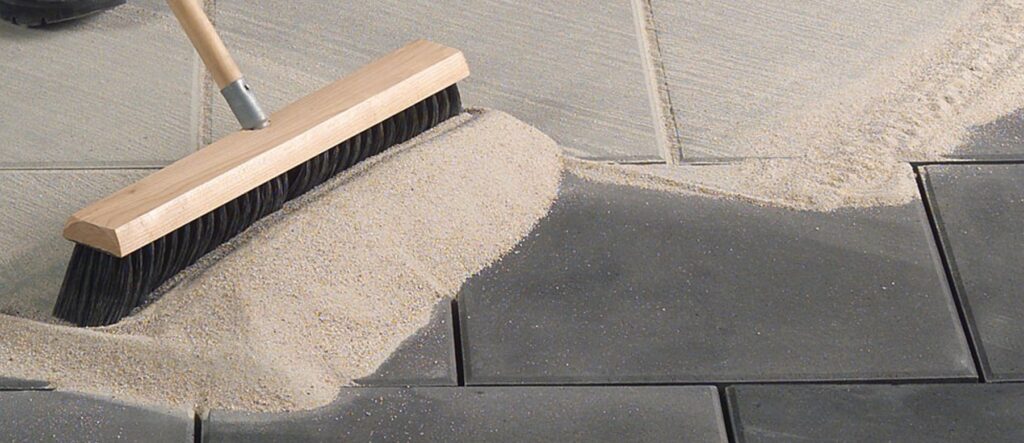
Once polymeric sand hardens and sets, it forms a durable and long-lasting bond that can withstand foot traffic, weathering, and other environmental factors. This reduces the need for frequent maintenance and repairs, for instance.
Contact Eagle Pavers today for a thorough hardscape installation with polymeric sand
As a branch of Eagle Stones, our team specializes in paver supply and installation around the county of Sarasota and Manatee, Florida. In case you’re near us, don’t hesitate to give us a call so we can get started on your project with a free estimate!
Click here to view the full online catalog – we’ll be waiting for you to reach out.


